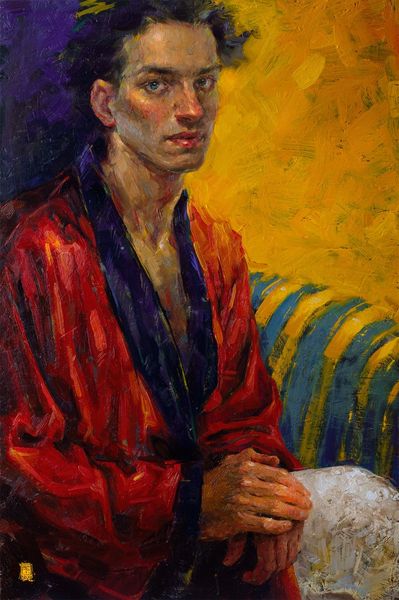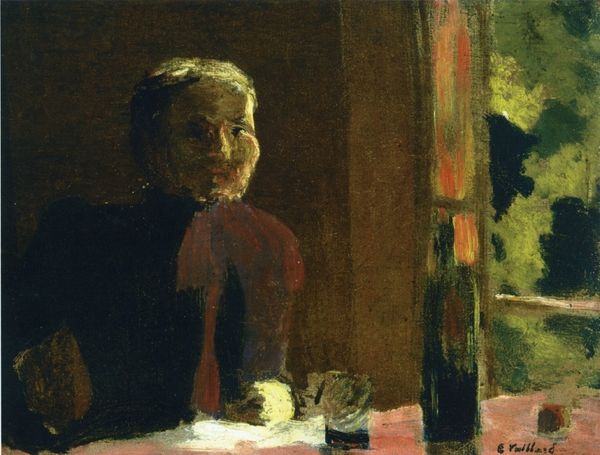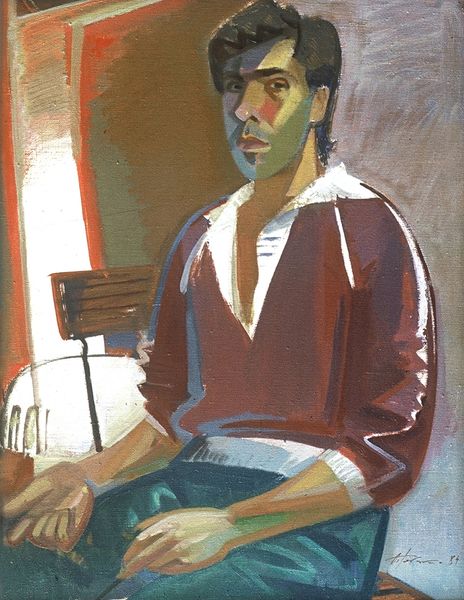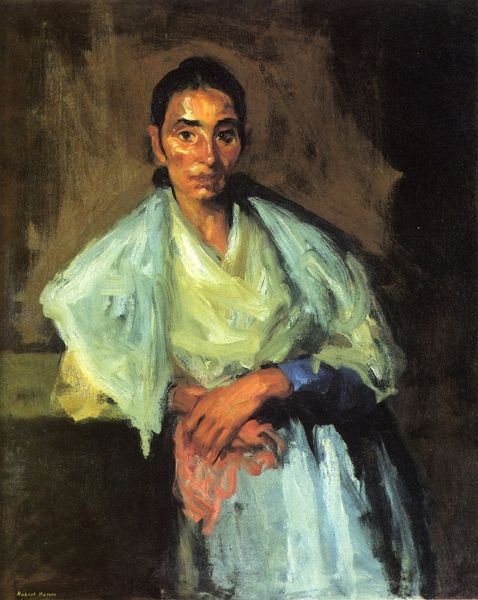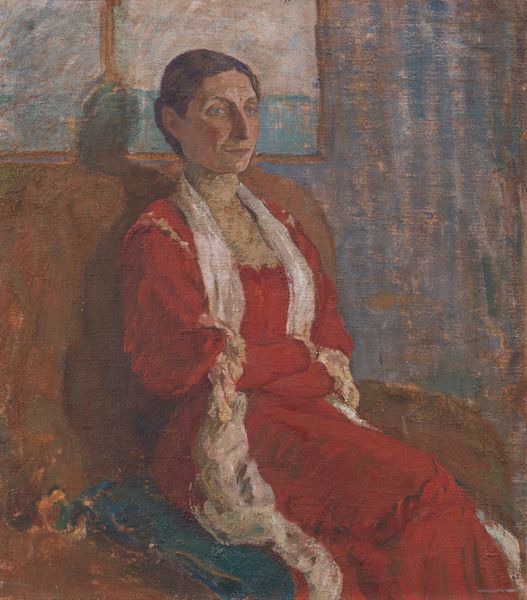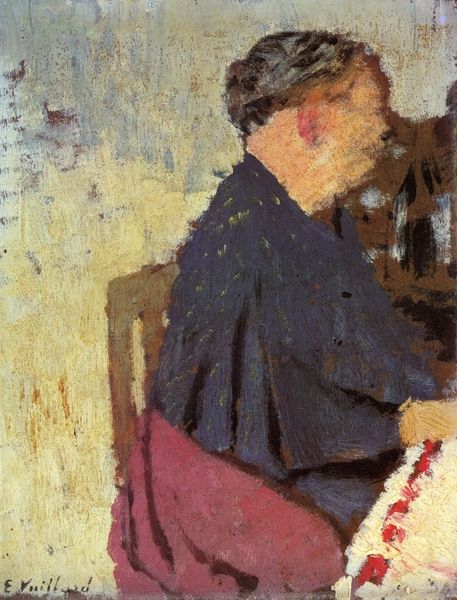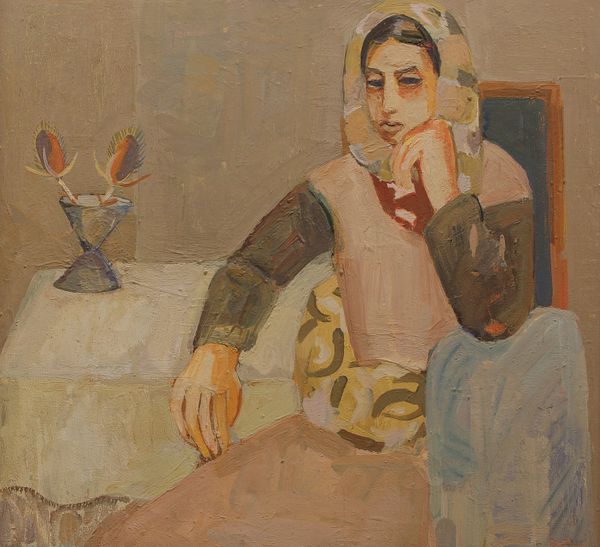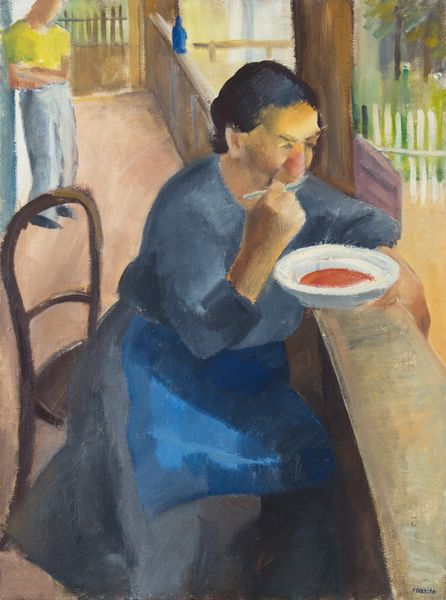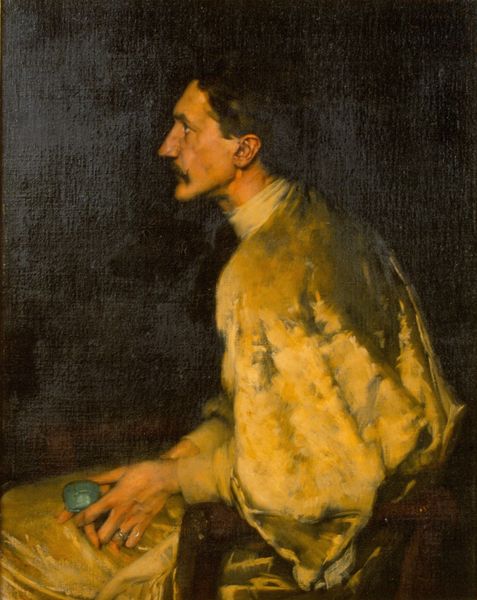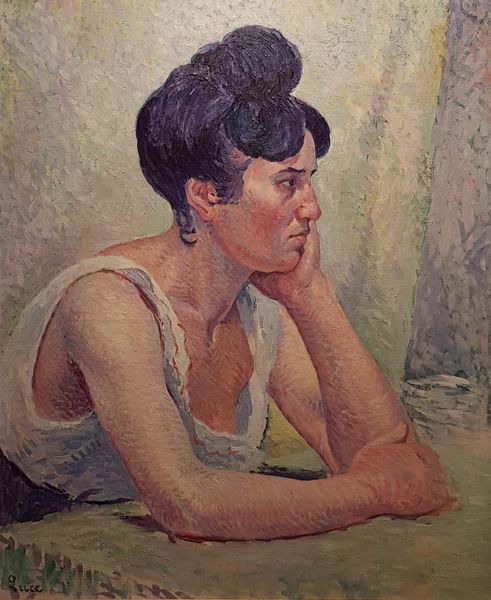
painting, oil-paint
#
portrait
#
painting
#
oil-paint
#
german-expressionism
#
figuration
#
oil painting
#
expressionism
#
portrait art
Dimensions: 65 x 76 cm
Copyright: Public domain
Editor: Okay, next up we have Selbstbildnis Mit Gitarre – Self-Portrait with Guitar – by Otto Mueller. It's an oil painting, although undated. It's an intimate side profile. I immediately think about its melancholic feel, given the subdued tones. How do you approach a piece like this? Curator: Well, let’s consider Mueller’s place within German Expressionism. His association with Die Brücke highlights a move away from academic painting toward direct emotional expression. How does this portrait, in its presumed private setting, reflect the social concerns of artists during this period? Editor: I guess the directness… that focus on emotion… it’s clear in the brushstrokes, very gestural and less about realistic detail. The setting feels claustrophobic; it's not like he is out having fun. How much would his experiences during wartime, especially leading up to and during World War I, have informed that more…introverted feel? Curator: The First World War acted as a cataclysmic event, significantly affecting artists' views. Notice the almost stark palette. Mueller, like many, felt alienated and questioned the established order. That sentiment definitely surfaces in his art. Now, think about how the 'New Objectivity' movement critiqued Expressionism for being overly emotional. Does this portrait perhaps engage in that discussion in any way? Editor: Perhaps. I’m not sure. But looking again, it is not glorifying anything about himself or the world at large. Thanks, I have a clearer view of how his life impacted his work and can speak to some of those factors now. Curator: Absolutely. Understanding art movements as responses to social anxieties enables us to move beyond simple descriptions to analyze an artist's participation in ongoing cultural debates.
Comments
No comments
Be the first to comment and join the conversation on the ultimate creative platform.
